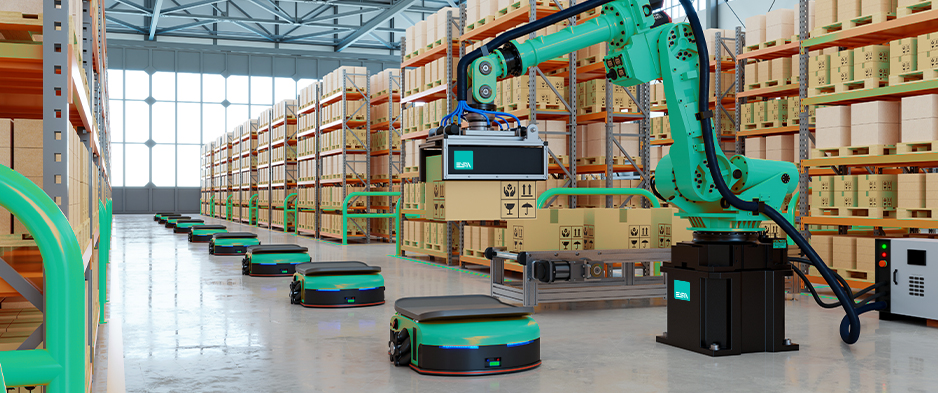In the era of Industry 4.0, the role of industrial robots, particularly Autonomous Mobile Robots (AMR), has significantly strengthened. These intelligent devices, capable of moving independently and performing various tasks normally assigned to a human operator, are revolutionizing the industrial world.
What is a Mobile Robot?
A mobile robot is an intelligent device capable of autonomously moving in confined spaces, performing tasks such as order fulfillment or the transportation of goods. This autonomy comes from the use of sensors, digital mapping software, and artificial intelligence. Various types of AMR exist, such as picking robots, which can be divided into “man to goods” and “goods to man” depending on the retrieval logic, or robots for cataloging and sorting items, capable of classifying products and placing them in the correct position.
Mobile Robot Technology
AMRs differentiate from other devices by their ability to move without the aid of external cables or dedicated sensors. They utilize an on-board mapping system, which allows them to define the route as they move, enabling them to change direction in real-time in the case of obstacles or people, ensuring high safety. This flexibility sets them apart from Automated Guided Vehicles (AGV), which follow a predefined path and are not capable of making autonomous decisions.
AMRs in Industry 4.0 and the Growing Market
The integration of AMRs into Industry 4.0 has created a turning point in the field of production and logistics. For instance, in the automotive industry, AMRs are used to transport components from the warehouse to assembly lines, optimizing production times. In the pharmaceutical industry, mobile robots perform crucial tasks such as handling potentially dangerous substances, ensuring worker safety.
Even in the food industry, AMRs find wide use: from transporting ingredients to production lines, to managing finished products in refrigerated warehouses. In the electronics sector, AMRs allow for accurate management of production material, reducing errors and improving the quality of the final product.
The market for mobile robots is experiencing a period of significant growth. It is predicted that in the coming years the demand for AMRs will continue to rise, thanks to their ability to improve the efficiency of production processes and reduce operating costs. Particularly, with the increase in e-commerce and the need for efficient logistical hubs, AMRs will become increasingly indispensable.
Future Prospects
Despite mobile robots already being widely used, the future may hold further developments. It’s likely we will see an increase in the multifunctionality of robots, with a consequent increase in reliability and flexibility rates. These devices will become even smarter, capable of learning and adapting to changes over time, making industrial operations even more efficient.
In conclusion, the mobile robot market is in strong expansion and it is expected that this trend will continue to grow in the coming years. AMRs are revolutionizing the industry and, thanks to their versatility and efficiency, they represent the future of industrial production.

